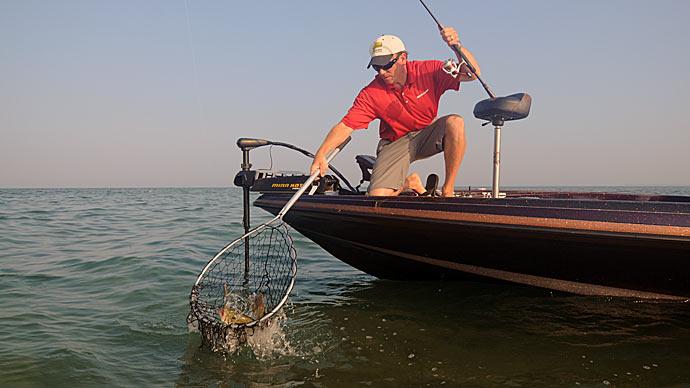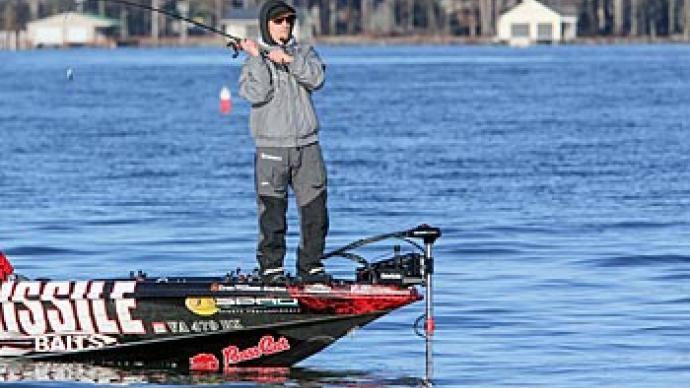| "It's been said by many tournament fisherman that jigging spoons are the most difficult baits in the world to learn to master. The strike by the bass usually feels as if you are pulling your bait through molasses. When it feels like Aunt Jemima just grabbed it, jerk! You probably got a bass!" |
| --Jimmy Houston |
Jigging spoons are "structure lures " most often used by experienced bass fishermen. They are one of the few bass lures that work well in deep water and are probably used most often to catch suspended bass. Jigging spoons are especially productive in frigid and extremely hot water when bass are not moving and holding tight to the bottom, suspending or hanging close to cover in a confined area. They work best when you've found bass in a tight area, such as along a creek channel drop-off. Here, bass often bunch up, and it may be possible to catch a great many bass in a short time on the spoon, making it especially well suited to tournament fishing. A depth finder is essential when fishing a jigging spoon deeply. Jigging spoons can be fished "vertically" or right over the fish, but they also make effective topwater lures when retrieved fast.
Techniques for Suspended Fish
During the summer and the fall turnover, bass will suspend on the thermocline. Use a 1/3-ounce spoon on a 2 1/2-foot leader attached to your line with a swivel. Tie directly to the spoon for a dying baitfish action.
- Locate suspended bass on your depth finder.
- Position the boat directly over the fish. Marker buoys will help maintain position.
- Drop the lure into the fish's zone.
- Snap the lure up and down repeatedly, allowing the bait to fall back each time.
Techniques for Surfacing Fish
When breaking fish are spotted, cast the spoon beyond the surface activity and hold the rod very high. Immediately begin a high-speed retrieve, skipping the spoon across the top. If no strike occurs, stop and let the spoon fall on a tight line through the school.
Where to Fish Jigging Spoons
- Over treetops of submerged standing timber.
- On the bottom, at the ends, and on the deep sides of points.
- Along deep drop-offs and channel breaks.
- In deep brush and stumps (replace treble hooks with a single hook).
- In current for river bass (cast and retrieve like a crankbait).
- Around submerged islands or humps (fish the tops, ends, and sides).
Tips
- A 3/4 ounce spoon is best for most bass fishing situations, but heavier spoons can help you stay on top of deep fish in wind or current.
- A single hook will catch as many bass on a jigging spoon as a treble hook and is less damaging to fish you wish to release. A single hook will hang up far less than a treble hook.
- Spoons are "designed to be lost," so bring several with you as rocks, stumps, etc., will often create hang-ups, and the lures may be impossible to retrieve in deep water.
- To retrieve a snagged spoon, move the boat directly over the hang-up and jiggle the rod up and down a few inches at a time. Eventually, the weight of the spoon may work the hooks free.
- Use a wire cross-locking snap when fishing a jigging spoon.




